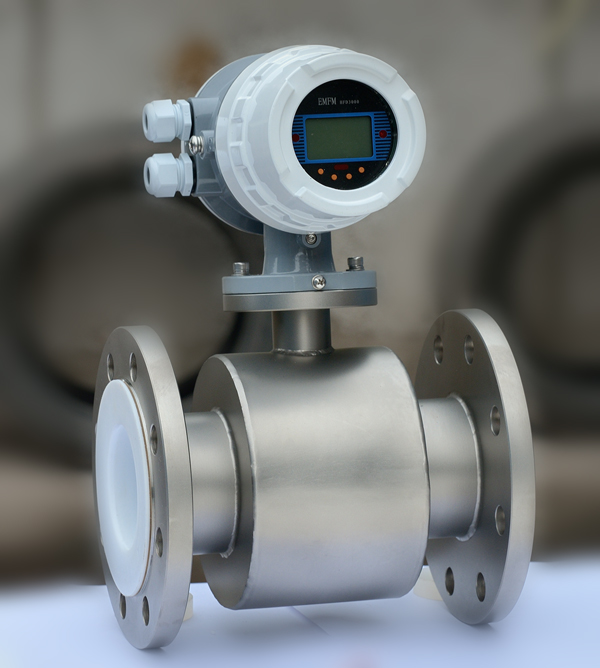Electromagnetic flowmeters, readers who are instrumentalists must have seen electromagnetic flowmeters on many occasions.The measurement principle of the electromagnetic flowmeter does not depend on the characteristics of the flow rate. If there is a certain amount of turbulence and vortices in the pipeline in the non-measurement area, it has nothing to do with the measurement.A. The installation site must not have a large vibration source, and reinforcement measures should be taken to stabilize the pipeline near the instrument; B. It cannot be installed near large-scale transformers, motors, pumps and other equipment that generate large magnetic fields to avoid interference from electromagnetic fields; C. When connecting the sensor and the pipeline, ensure that the full pipe runs, preferably installed vertically; D, the transmitter housing, shielded cable, measuring body and the pipeline at both ends must be grounded, the grounding electrode should be set separately, and the grounding resistance should be less than 10 ohms , Can not be connected to the electrical or public grounding network; E, straight pipe section with the diameter of the first 5 times and 3 times the pipe diameter is required.The details are as followsIf there is a steady-state eddy current in the measurement area, it will affect the stability and accuracy of the measurement. At this time, the length of the front and rear straight pipes can be increased, a flow stabilizer or the cross section of the measurement point can be reduced to stabilize the flow velocity distribution.The flowmeter can be installed horizontally and vertically, but it should be ensured to avoid the influence of deposits and bubbles on the measuring electrode, and it is better to keep the electrode axis horizontal. When installed vertically, the fluid should flow from bottom to top.The sensor cannot be installed in the highest position of the pipeline, this position is easy to accumulate bubbles.Make sure that when the flow sensor is measuring, the pipe is filled with the fluid to be measured, and there is no partial pipe state.If the pipeline is not full or the outlet is vented, the sensor should be installed on a siphon.The conventional straight pipe section of the electromagnetic flowmeter is required to be the first 10D and then the 5D. There are different requirements in the case of elbows and valves.Reasons for electromagnetic flowmeter grounding:The measuring electrode in the electromagnetic flowmeter is in a DC or AC electric field. If the environment cannot be effectively shielded under a non-interference condition, it will seriously interfere with the measurement.Whether the sensor shell is grounded or not is directly related to the accuracy and stability of the measurement. The grounding wire must not transmit any interference voltage. Therefore, the electromagnetic flowmeter requires a very reliable grounding, and the grounding shielding must be done, otherwise interference currents will be generated.However, the advantage of electromagnetic flowmeter grounding: If the pipe connecting the sewage flowmeter is insulated (relative to the measured medium), a grounding ring should be used, and its material should be selected according to the corrosiveness of the measured medium.If it is a PTFE sensor, in order to protect the PTFE flanging from damage, a grounding ring should be used.
Post time: 21-09-21
